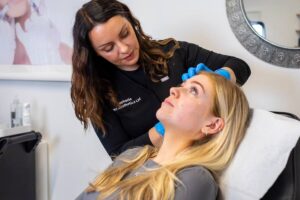Platelet-Rich Plasma (PRP) therapy is an innovative medical treatment that leverages the body’s natural healing processes to address a variety of conditions. This treatment involves drawing a small amount of a patient’s blood, processing it in a centrifuge to concentrate the platelets, and then injecting this concentrated plasma into the patient’s affected area. PRP contains growth factors and proteins that accelerate tissue repair, and it has gained popularity in various medical fields. Here are some of the key conditions that PRP is used to treat:
- Orthopedic Injuries: PRP therapy has seen extensive use in treating musculoskeletal injuries. Commonly treated conditions include tendinitis, ligament sprains, and joint injuries. For example, PRP injections are frequently utilized in the management of conditions like tennis elbow, rotator cuff tears, and Achilles tendonitis. The growth factors in PRP stimulate healing in the injured tissues, potentially reducing recovery time and improving overall function.
- Osteoarthritis: PRP therapy is also employed in the management of osteoarthritis, particularly in the knees. Injecting PRP into the arthritic joint may help reduce inflammation and promote the regeneration of cartilage, thus alleviating pain and improving joint function. Some studies suggest that PRP injections can be more effective than traditional treatments like hyaluronic acid injections.
- Hair Loss: Another notable application of PRP therapy is in the treatment of hair loss. PRP is injected into the scalp to stimulate hair follicles, potentially leading to increased hair density and thickness. This application is especially prevalent in addressing androgenetic alopecia, commonly known as male or female pattern baldness.
- Dermatological Conditions: PRP therapy is making strides in the field of dermatology, particularly for skin rejuvenation. It is often used in combination with microneedling to enhance skin texture, reduce fine lines and wrinkles, and improve overall skin tone. The growth factors in PRP aid in the production of collagen and elastin, essential components in maintaining youthful and healthy skin.
- Sports Injuries: Athletes are increasingly turning to PRP therapy to treat acute sports injuries. These include muscle strains, ligament injuries, and other joint problems commonly encountered in sports. The use of PRP can promote faster healing and enable athletes to return to their activities more quickly.
- Post-Surgical Healing: PRP therapy is also beneficial in promoting post-surgical healing. It can be used to enhance the healing process after surgeries, particularly those involving tendons and ligaments. The concentrated platelets in PRP support the body’s repair mechanisms, potentially leading to quicker recovery times and better surgical outcomes.
In conclusion, PRP therapy offers versatile applications across a broad range of medical fields. Its ability to harness the body’s own healing properties makes it an attractive option for patients seeking to treat orthopedic injuries, osteoarthritis, hair loss, dermatological conditions, sports injuries, and post-surgical wounds. As research continues to expand, the potential uses of PRP therapy are likely to grow, providing even more opportunities for non-invasive treatments.



